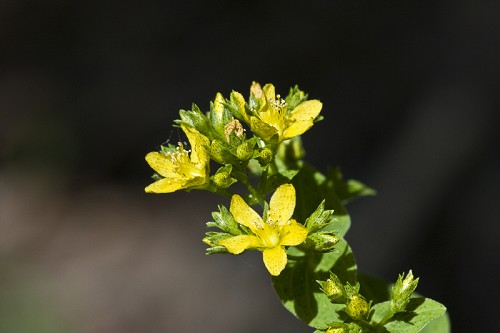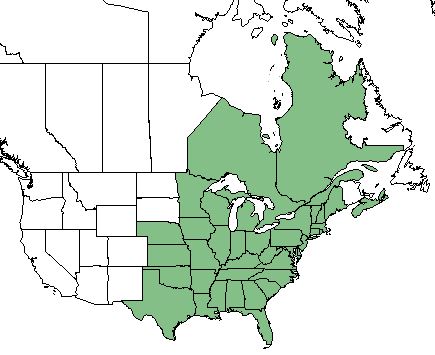Difference between revisions of "Hypericum punctatum"
(→Habitat) |
(→Ecology) |
||
| Line 43: | Line 43: | ||
''H. punctatum'' is not a fire resistant forb but has a mild tolerance to fire. <ref name= "USDA"> [https://plants.usda.gov/core/profile?symbol=CEAM USDA Plant Database]</ref> | ''H. punctatum'' is not a fire resistant forb but has a mild tolerance to fire. <ref name= "USDA"> [https://plants.usda.gov/core/profile?symbol=CEAM USDA Plant Database]</ref> | ||
<!--Fire tolerance, fire dependence, adaptive fire responses--> | <!--Fire tolerance, fire dependence, adaptive fire responses--> | ||
| − | + | ||
| + | ===Pollination=== | ||
| + | This species is considered by pollination ecologists to be of special value to bumble bees since the flowers attract such large numbers for pollination.<ref name= "lady bird"/> | ||
<!--===Use by animals===--> <!--Herbivory, granivory, insect hosting, etc.--> | <!--===Use by animals===--> <!--Herbivory, granivory, insect hosting, etc.--> | ||
<!--==Diseases and parasites==--> | <!--==Diseases and parasites==--> | ||
Revision as of 19:58, 28 May 2019
spotted St. John's-wort [1]
| Hypericum punctatum | |
|---|---|

| |
| Photo by the Southeastern Flora Plant Database | |
| Scientific classification | |
| Kingdom: | Plantae |
| Division: | Magnoliophyta - Flowering plants |
| Class: | Magnoliopsida - Dicots |
| Order: | Theales |
| Family: | Clusiaceae |
| Genus: | Hypericum |
| Species: | H. punctatum |
| Binomial name | |
| Hypericum punctatum Lam. | |

| |
| Natural range of Hypericum punctatum from USDA NRCS Plants Database. | |
Contents
Taxonomic Notes
Synonyms: Hypericum punctatum Lamarck var. punctatum; Hypericum subpetiolatum E.P. Bicknell ex Small
Description
H. punctatum is a perennial forb/herb of the Clusiaceae family native to North America. [1]
Distribution
H. punctatum is found throughout the eastern United States and up into Eastern Canada, specifically Ontario and Quebec. [1]
Ecology
Habitat
H. punctatum has a low tolerance for drought. It is tolerant of shade. [1] It is commonly found in fields and woodland borders.[2] This species also prefers partial shade, and has a low tolerance for calcium carbonate.[3]
Phenology
Flowers bloom in the early summer months.[1] It commonly flowers between June and September.[2]
Seed dispersal
This species is thought to be dispersed by gravity. [4]
Fire ecology
H. punctatum is not a fire resistant forb but has a mild tolerance to fire. [1]
Pollination
This species is considered by pollination ecologists to be of special value to bumble bees since the flowers attract such large numbers for pollination.[3]
Conservation and Management
Cultivation and restoration
Photo Gallery
References and notes
- ↑ 1.0 1.1 1.2 1.3 1.4 1.5 USDA Plant Database
- ↑ 2.0 2.1 Weakley, A. S. (2015). Flora of the Southern and Mid-Atlantic States. Chapel Hill, NC, University of North Carolina Herbarium.
- ↑ 3.0 3.1 [[1]] Lady Bird Johnson Wildflower Center. Accessed: May 28, 2019
- ↑ Kirkman, L. Katherine. Unpublished database of seed dispersal mode of plants found in Coastal Plain longleaf pine-grasslands of the Jones Ecological Research Center, Georgia.